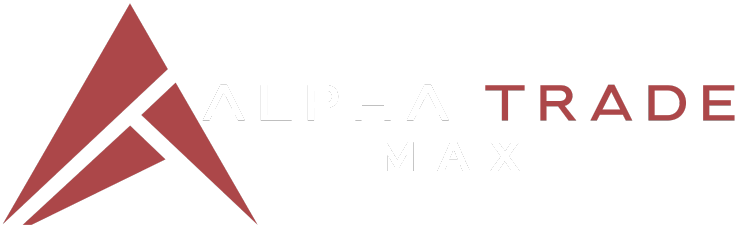What does staking mean?
Staking with Alphatrade Max is a process that allows users who own and hold supported cryptoassets to earn rewards – just for holding them. Alphatrade Max executes the staking process on behalf of its users. The rewards are more of these cryptoassets, which means that users grow their cryptoasset holdings, using a similar mechanism to the way in which a person can earn interest on money.
See “What is Staking?” in the FAQ below.

Staking With Alphatrade Max – How You Benefit
Staking with Alphatrade Max is simple, secure and hassle-free. Staking rewards are paid out to users every month, in the supported cryptoasset, with no action at all required on their part.
The staked cryptoassets remain the property of the Alphatrade Max users; in turn, Alphatrade Max users entrust Alphatrade Max to execute the entire staking procedure for them, securely and effectively.
Alphatrade Max takes great care to protect our users’ cryptoassets against exposure to any additional risks, sparing them the hassle and complication of staking on their own. Consequently, Alphatrade Max retains a small percentage of the yield as a fee, as well as to cover the various operational, technical, and legal costs involved.

Who can receive staking rewards?
Alphatrade Max users are eligible to receive staking rewards if they hold any of the supported cryptoassets, with the exception of the following users:
For Cardano (ADA), Etereum (ETH) and Tron (TRX): UK residents who registered with Alphatrade Max on or after February 8 2022, and all Alphatrade Max US users.
For ETH 2.0: UK residents who registered with Alphatrade Max on or after February 1 2022, and all Alphatrade Max US users.
* For a list of the eligible countries where ETH 2.0 can be staked with Alphatrade Max, click here.
Note: Alphatrade Max’s Staking Service does not include cryptoassets held using CFDs, copy trading, smart portfolios, or short positions.
Alphatrade Max prides itself on being consistently transparent towards its users. It is therefore essential that we explain precisely how we calculate the monthly entitlement regarding the distribution of rewards for all users.
- A daily snapshot of each user’s holdings is taken each day at 00:00 GMT. This shows each user’s eligible staking units for all of their open positions. See “What are the eligible staking units?” in the FAQ below.
- At the end of each month, the total of all the month’s snapshots are divided according to the number of days in the month, producing an average daily amount.
- The average daily amount is the basic amount on which the calculations are made to get the individual user’s monthly reward. The monthly yield percentage per cryptoasset (see FAQ) is calculated, and then the applicable Club member percentage (see table above) is added to the calculation.
The amount of a reward must be of a value that is no less than 1 USD.
See “How is the monthly yield per cryptoasset calculated?” in the FAQ below.
Note: Alphatrade Max offers users the ability to waive their right to receive staking rewards on Alphatrade Max. Users simply need to open a ticket to Customer Service, and they will be sent a waiver form to sign.
Terms and conditions apply.
Disclaimer: Buying cryptoassets is unregulated in most EU countries and therefore is not supervised by the EU regulatory framework, and carries no EU protections. Your capital is at risk.
Alphatrade Max’s Staking Service does not include cryptoassets held using CFDs, copy trading, smart portfolios, or short positions.

Frequently Asked Questions
To How does it work?
Eligible Alphatrade Max users receive the staking rewards that they have earned each month directly and automatically, with absolutely no action required on their part. Each user also receives an individual monthly email, explaining how much in staking rewards they received that month, and how it was calculated for each of the supported staked cryptoassets.
What is staking
Staking is a process that allows rewards to be earned by holders of a specific coin. Staking derives from the PoS (Proof-of-stake) mechanism, used by a distributed blockchain network, where blockchain miners can mine or validate block transactions according to how many coins they have. The more coins they hold, the more mining power they have. Staking rewards are shared with users who own the cryptoassets (like Alphatrade Max and our clients) and who delegate their voting rights to staking pools. The more validations that are delegated to a staking pool, the higher chance of being elected to produce the next block, and the more rewards likely to be received.
How do i stop recieving staking rewards?
Should you wish to no longer benefit from the staking services on Alphatrade Max investment platform, Contact Alphatrade Max support team
Does Alphatrade Max support staking?
Yes, Alphatrade Max supports staking.
What coins are supported?
Alphatrade Max currently supports staking for Cardano (ADA), Ethereum(ETH) and Tron (TRX), and is working on plans to support more cryptoassets in the future.
Do i recieve the entire staking amount?
Alphatrade Max staking rewards are among the most generous in the market, from a minimum of 75% of the staking yield. Alphatrade Max retains a small percentage of the yield as a fee, as well as to cover the various operational, technical, and legal costs involved.
Why are you keeping a percentage of it?
Alphatrade Max takes great care to protect our users’ cryptoassets against exposure to any additional risks, sparing them the hassle and complication of staking on their own. Consequently, Alphatrade Max retains a small percentage of the yield to cover the various operational, technical, and legal costs involved.
Why aren't all coins supported on the Alphatrade Max platform receiving staking?
Alphatrade Max currently supports staking for Cardano (ADA), Etereum (ETH) and Tron (TRX), and is working on plans to support more cryptoassets in the future.
When will I receive the staking?
Staking rewards will be distributed for a specific month within 14 days of the following month. No action is required on the part of the user..
How long do I have to be holding the coins to receive the staking?
A user is eligible for a staking reward if they have held an open position of the staked cryptoasset for a certain period of time. The time period for when a user becomes eligible differs per cryptoasset; according to the blockchain of the specific cryptoasset, and how long it takes for it to be included in the staking pool. For example, for Cardano, the position must have been open for at least nine days (cryptoasset intro days), with users becoming eligible from day ten. For Tron, the position must have been open for at least seven days, with users becoming eligible from day eight..
How are rewards shared with users?
Rewards are distributed automatically. An email with full details will be sent, including a table that specifies the amount for which the reward is calculated, the aggregated monthly yield, and the total reward given. The email will also link to a dedicated Staking web page, which will explain the formula for eligibility calculation, interest rates, and other related information. Note: There will be indication on users’ account statements or their history regarding staking rewards.
When are rewards distributed each month?
Staking rewards will be distributed for a specific month within 14 days of the following month. No action is required on the part of the user.
Why does Alphatrade Max keep a certain amount of the reward amount?
Alphatrade Max takes great care to protect our users’ cryptoassets against exposure to any additional risks, sparing them the hassle and complication of staking on their own. Consequently, Alphatrade Max retains a small percentage of the yield to cover the various operational, technical, and legal costs involved.
Do users need to do anything to be eligible for staking rewards?
A user is eligible for a staking reward if they have held an open position of the staked cryptoasset for a certain period of time. The time period for when a user becomes eligible differs per cryptoasset; according to the blockchain of the specific cryptoasset, and how long it takes for it to be included in the staking pool. For example, for Cardano, the position must have been open for at least nine days, with users becoming eligible from day ten. For Tron, the position must have been open for at least seven days, with users becoming eligible from day eight.
In which currency the clients will get their reward?
Rewards will be shared in the same cryptoasset that was staked; for example, the rewards on the ADA staking will be given in ADA.
How does Alphatrade Max calculate the eligibility of a rewards?
Here is how the staking rewards are calculated: 1. A daily snapshot of each user’s holdings is taken each day at 00:00 GMT. This shows each user’s eligible staking units (see “What are the eligible staking units?) for all of their open positions. 2. At the end of each month, the total of all the month’s snapshots are divided according to the number of days in the month, producing an average daily amount. 3. The average daily amount is the basic amount on which the calculations are made to get the individual user’s monthly reward. The monthly yield percentage (see “ How is the monthly yield per cryptoasset calculated?”) is calculated, and then the applicable club member percentage is calculated on that. Example Dave, a Diamond Alphatrade Max Club member, opened a position of 5,000 units of ADA on September 1. He then opened an additional position of 1,000 units on September 8, which he closed on September 25. To calculate Dave’s September staking rewards, we will do the following: Calculate the number of eligible days for September: This is done by calculating the days between the open position date and the close position date, and deducting the intro days from that amount. Amount Open date Close date Intro days Close date for staking calculation # of Eligible staking days Position 1 5,000 Sep 1 – 9 Sep 30 20 days (29-9) Position 2 1,000 Sep 8 Sep 25 9 Sep 25 8 days (17-9) To calculate the average daily position for Dave: (Staked amount) x (number of eligible days) ÷ (number of days in the month)Position 1: 5000 * 20 / 30 = 3333.33 Position 2: 1000 * 8 / 30 = 266.66 Therefore: The total average daily positions: 3599.99 ADA unitsNote: A daily snapshot of each user’s holdings is taken each day at 00:00 GMT. Calculating the Final Staking Reward for the month: (Average daily position) x (monthly yield) x (revenue share)For the month of September, the calculation yield for Cardano was 0.4%: 3599.99 ADA units x 0.4% = 14.39 ADA unitsDave is a Diamond club member, so he gets 90% of the staking yield: 90% of 14.39 ADA units = 12.95 ADA Units Therefore, Dave’s total staking reward for the month of September was 12.95 ADA units.
Does staking apply to coins held in the Alphatrade Max trading platform, Wallet and the Exchange?
Staking applies to cryptoassets held in the Alphatrade Max trading platform only
What is the minimum amount that a reward can be?
The amount of a reward must be of a value that is more than 1 USD.
Is staking profitable?
Staking allows users who own and hold supported cryptoassets to earn rewards of more of these cryptoassets just for holding them, meaning that users grow their holding in much the same way as they would earn interest on money.
Is staking crypto safe?
Can you stake Bitcoin?
No. Staking derives from the PoS (Proof-of-Stake) mechanism, used by a distributed blockchain network, where blockchain miners can mine or validate block transactions according to how many coins they have. The more coins they hold, the more mining power they have. You cannot stake Bitcoin, since Bitcoin miners employ a Proof of Work (PoW) mechanism, on which staking is not possible.
Which coins can I stake?
Alphatrade Max currently supports staking for Cardano (ADA), Etereum (ETH) and Tron (TRX), and is working on plans to support more cryptoassets in the future.
How do you start coin staking?
To begin staking, a user needs to purchase and own one or more of the supported cryptoassets. The user then needs to hold the open position of the staked cryptoasset for a certain period of time. The time period for when a user becomes eligible differs per cryptoasset; according to the blockchain of the specific cryptoasset, and how long it takes for it to be included in the staking pool.
What are the eligible staking units?
Each day of the month, a daily “snapshot” of each user’s holdings is taken at 00:00 GMT. These are multiplied by the number of days in the month, and the result is the number of eligible staking units for a user in a specific month.
How is the monthly yield per cryptoasset calculated?
To calculate the monthly yield per cryptoasset Alphatrade Max divides the total number of new coins (AKA the total sum of the reward) for the month by the total average daily amount of all eligible staking users. Example: In the month of September 500,000 ADA coins were received on Alphatrade Max as the staking reward. For the same month, the total average daily amount of ADA held by eligible staking users was 10,000,000 ADA coins. Therefore, the calculation will be 500,000 divided by 10,000,000, resulting in a monthly yield of 0.4%.
How does Alphatrade Max support staking on a leveraged position?
Open crypto positions with leverage are only eligible for staking on the part of the position held with the non-leveraged value (i.e. bought with the users own money). If money is added to the position in order to lower the leverage, the amount of crypto on which staking is eligible increases, but this extra amount requires the same number of intro days to become eligible as it would if the extra money represented a new position. If money is removed from the position, thereby increasing the leveraged value, the eligible staking amount decreases immediately.
Earnings Compound: Will staking earnings (rewards) also be used as part of the input amount for the next staking reward calculation?
Yes. The October staking reward calculations will include staking reward percentages earned in September. The rewards will be calculated according to the number of intro days of the specific cryptoasset. For example, Cardano has nine intro days, with calculations beginning on the tenth day of holding the asset.

